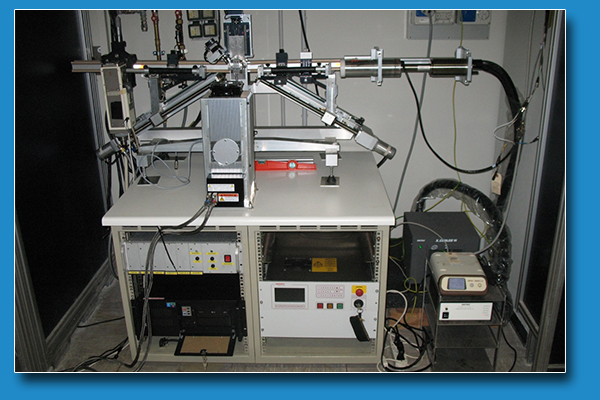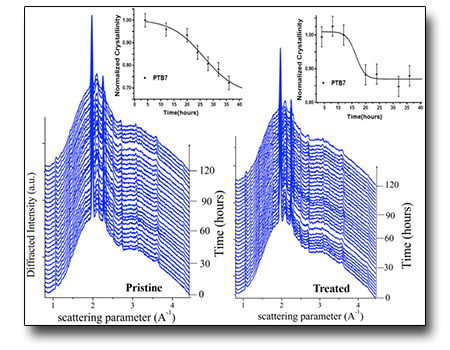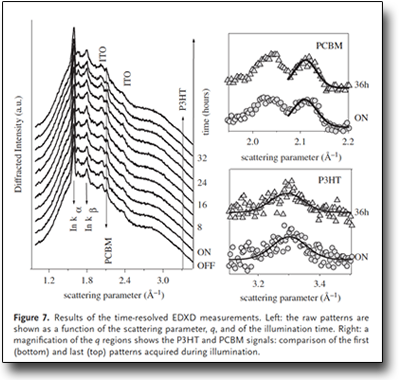
TECHNICAL SPECIFICATIONS
- Siefert 3.5KW Generator: typical working conditions E=55kV, I=40mA max.
- X-Ray sources with W and Ag anode
- ORTEC Ge-Single crystal solid state detector
- ORTEC-ADCAM Electronic data acquisition
- In House acquisition software
- Motorized arms, max 25°for each arm
- W collimation slits (square or rectangular collimation) : max collimation 20*20m μm
- Manual and motorized translators (x-y)
- Standard sample holder
- Especially designed sample holder for Joint X-ray/Solar simulator measurements: Transparent quartz holder
- Integrated LOT AM1.5 Solar simulator
AVAILABLE TECHNIQUES
- In situ time resolved EDXD
- Joint EDXD/solar illumination
- In situ time resolved Joint EDXD/solar illumination
SAMPLE
-
Thin films max in plane dimensions 8cm*8cm.
-
Multilayered samples max in plane dimensions 8cm*8cm.
USE FOR
- Determining structural parameters and phases of films/multilayers.
- In situ time resolved monitoring of structural parameters and phases for thin films/multilayers as a function of external conditions: ambient conditions, controlled atmospheres, solar simulator exposure.
- Primary and secondary crystallization/amorphization studies of thin films/multilayers in situ and time resolved.
Case Studies
In situ space-resolved X-ray diffraction and time-resolved EDXD on efficient polymer-based photovoltaic devices: Microstructural properties and aging effects
Microstructural and morphological features of the layers forming integrated PTB7/PC71BM organic solar cells with Ca/Al cathode are studied.
The effects of vacuum treatment on properties and durability were addressed. For this propose, time-resolved experiments revealing the structural evolution of the active layers under illumination were conducted combining the in situ energy dispersive X-ray diffraction (EDXD) technique with atomic force microscopy (AFM).
See: F. Silvestri et al. Journal of Materials Research 2017 , pp. 1969-1981


Enhanced Structural Stability and Performance Durability of Bulk Heterojunction Photovoltaic Devices Incorporating Metallic Nanoparticles
It is shown, for the first time, that the incorporation of Ag nanoparticles P3HT:PCBM bulk heterojunction (BHJ) leads to improved structural and morphological properties of the composite BHJ solar cells and to better photovoltaic (PV) stability after long periods of continuous illumination. This is evidenced by an original approach based on joint X-ray/AFM monitoring, combined with time-resolved energy dispersive X-ray diffraction (EDXD) and electrical measurements. It can be postulated that the incorporation of metallic nanoparticles in the BHJ leads to a dual enhancement, a plasmon absorption mediated effect, causing improved initial cell efficiency, and a structural stability effect giving rise to reduced degradation rate upon prolonged illumination. The results are in favor of the exploitation of polymer–nanoparticle composites as a promising approach to mitigate the aging effects in OPVs
See: B. Paci et all Adv. Funct. Mater. 2011, 21, 3573–3582

 English (UK)
English (UK)  Italiano (Italia)
Italiano (Italia)